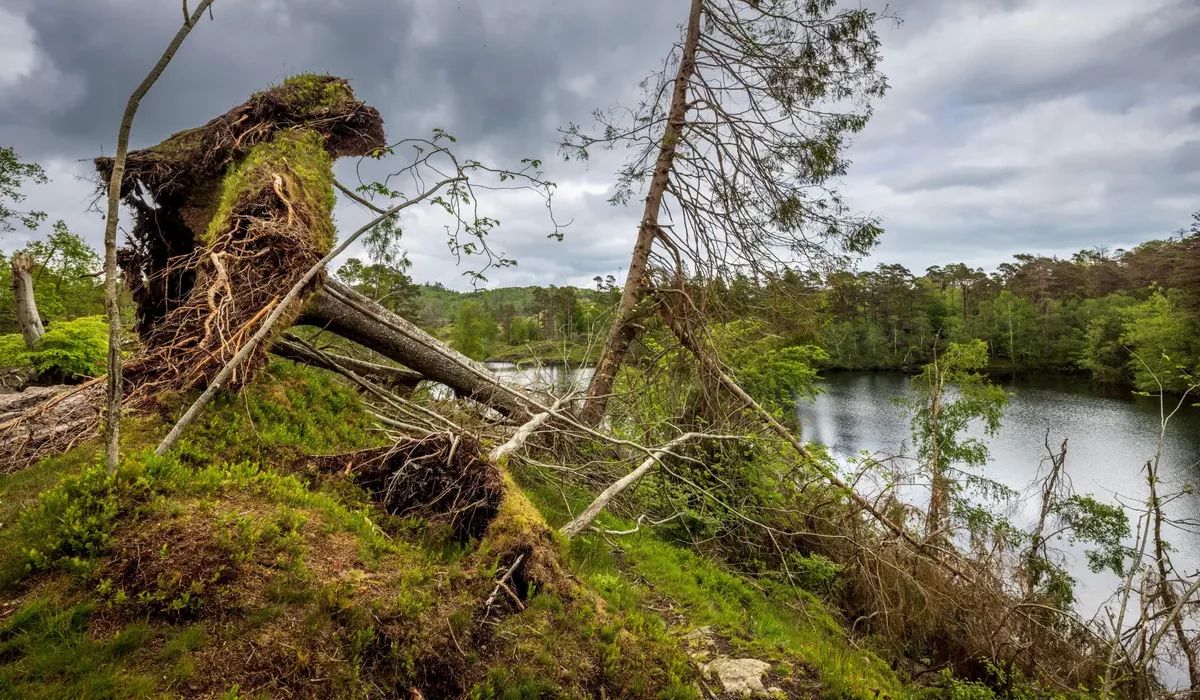Diverse forests are emerging as nature’s defense against the increasing frequency and severity of storms in Europe, as revealed by a groundbreaking study conducted by the French National Research Institute for Agriculture, Food and Environment (INRAE). This research, published in the Functional Ecology journal of the British Ecological Society, offers a profound understanding of the crucial role played by tree species diversity in bolstering the resilience of forests amid escalating climatic challenges. As Europe grapples with the escalating threat of more frequent and intense windstorms, the findings of this study present invaluable insights into forest management practices capable of enhancing resilience and preserving essential ecosystem services.
The study underscores the pressing need for sustainable strategies as climate change continues to fuel the intensity and frequency of storms. By highlighting the importance of tree species diversity, the research advocates for a paradigm shift in forest management approaches. The exploration of these insights is not just an academic exercise; it is a blueprint for safeguarding the vital services that forests provide, from carbon storage and habitat preservation to timber resources. As we delve into the intricate relationship between diverse forests and storm resilience, we uncover pathways toward a more sustainable coexistence with nature in the face of an ever-changing climate.
The Resilience Factor
The study’s core finding is those European forests boasting a higher diversity of tree species exhibit greater resilience to storms. The resilience is particularly pronounced in forests dominated by slow-growing species with high wood density, such as oak trees. Dr. Julien Barrere, the lead author of the study and a researcher at INRAE, highlights the importance of this discovery, emphasizing how monocultures of fast-growing species like pine, while economically valuable, are more susceptible to storm damage.
Unraveling the Dynamics
To arrive at their conclusions, the researchers employed sophisticated simulations to model how forests with distinct characteristics respond to and recover from storm damage. The simulations spanned a wide range of climate conditions, from the hot-dry Mediterranean regions to the cold-wet environments of northern Scandinavia. By incorporating data from 91,528 real-life forest plots across Europe, the researchers calibrated their model to simulate the dynamics of diverse forests post-storm, enabling a comprehensive understanding of the relationship between forest composition and resilience.
Climate Extremes and Tree Diversity
One of the study’s notable revelations is the impact of extreme climatic conditions on the positive correlation between tree diversity and storm resistance. The researchers found that under extreme conditions, such as the hot-dry Mediterranean climate or the cold-wet conditions of northern Scandinavia, the benefits of tree diversity were more pronounced. This insight is crucial for predicting how climate change might influence the resilience of European forests to storms, providing a basis for informed forest management strategies.
Economic Considerations vs. Ecological Sustainability
Dr. Barrere underlines the conflict between economic considerations and ecological sustainability in forest management. While fast-growing monocultures like pine may offer economic benefits, the study argues that their susceptibility to storm damage poses a significant risk. As storm losses increase across the continent, the research advocates for forest management practices that prioritize diversity and the cultivation of slow-growing species like oak, balancing economic interests with long-term ecological resilience.
Real-world Validation Needed
Despite the significance of the modeling study, the researchers emphasize the need for real-world validation through field studies. Dr. Barrere acknowledges the importance of interpreting modeling results in light of underlying assumptions and stresses the necessity of complementing simulation findings with on-the-ground observations. The call for further fieldwork underscores the importance of bridging the gap between theoretical models and practical implementation in sustainable forest management.
Implications for the Future
In a world grappling with climate change, the implications of this research extend beyond scientific curiosity. Understanding the relationship between tree diversity and storm resilience equips policymakers, forest managers, and conservationists with tools to navigate the challenges posed by changing climatic patterns. As Europe faces an uncertain future of more frequent and intense storms, embracing the wisdom of diverse and resilient forests becomes imperative for securing the myriad ecosystem services they provide, from carbon storage and habitat preservation to timber resources. The study beckons a shift in mindset, advocating not just for the preservation of individual trees but for the cultivation of diverse, resilient forests that can weather the storms of the future.
Conclusion
In conclusion, the research conducted by the French National Research Institute for Agriculture, Food and Environment (INRAE) illuminates a compelling narrative about the pivotal role played by tree species diversity in fortifying European forests against the escalating threat of storms. As climate change intensifies, the study advocates for forest management practices that prioritize diversity and the cultivation of slow-growing, resilient species like oak. This paradigm shift is not only ecologically imperative but holds the key to sustaining vital ecosystem services. As storms loom larger on the horizon, embracing the resilience of diverse forests becomes paramount for a sustainable coexistence with our changing environment.

